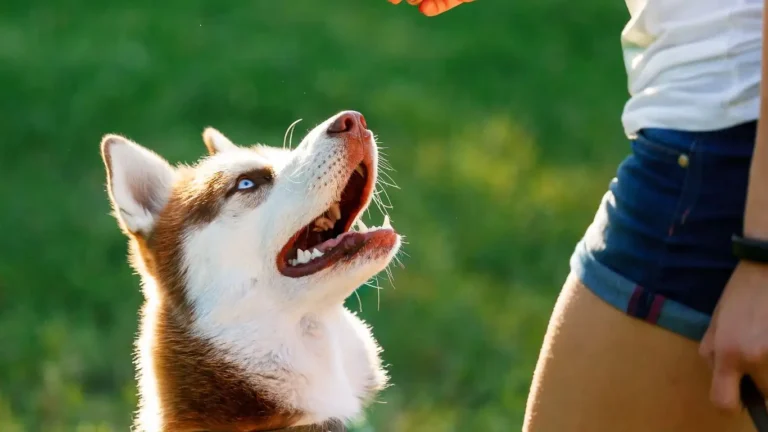How to Introduce Your Dog to Terrain Like a Pro: Tips for Confident Exploration
As a veterinary technician with a specialization in nutrition, I’ve worked with countless pet owners who want the best for their dogs. One thing I’ve noticed over the years is how much the type of terrain can affect a dog’s comfort and health. If you’ve ever taken your dog on an adventure, whether it’s a hike through the mountains, a walk through a city park, or a leisurely stroll on the beach, you’ve probably noticed how different these environments feel to your dog. Some dogs take to new terrains like a pro, while others need a little encouragement. So, how do you introduce a dog to different types of terrain safely and successfully? In this guide, I’ll walk you through the steps, offer some personal tips, and share some of the things I’ve learned working with dogs of all breeds and backgrounds.
Why Introducing Your Dog to Different Terrain Matters

Introducing your dog to different types of terrain isn’t just a fun way to keep them active, it’s also important for their overall health and wellbeing. Think about it—dogs are naturally curious creatures, but they can also be creatures of habit. Some dogs thrive on routine, and when you switch things up, they might feel unsure or even anxious. Introducing them to various terrains helps build their confidence and allows them to adapt to changes more easily. Plus, different terrains offer different benefits, whether it’s the soft sand on a beach for paw comfort, the challenging mountain paths for mental stimulation, or the smooth grass for easy running.
Physical Benefits of Exploring Different Terrains

Every type of terrain offers a different physical challenge for your dog. Whether they’re walking on uneven rocky ground or running through soft sand, these varying surfaces engage muscles in unique ways. For example, walking on rocky surfaces can help improve their agility and coordination, while running through grass helps prevent joint issues by providing a cushioned surface. Exploring more rugged terrains like hills or trails also improves your dog’s cardiovascular health, as it requires more exertion than a simple walk on pavement. It’s like cross-training for dogs!
Preparing Your Dog for the New Terrain
Before you dive into the adventure of introducing your dog to different terrains, it’s essential to prepare both physically and mentally. This process starts with your dog’s current activity level. If your dog isn’t used to long walks or hikes, start slow and build up their stamina. Try introducing them to softer terrains like grass or sand first, and gradually work your way up to more challenging environments.
- Check your dog’s health: Before introducing any new activity, make sure your dog is in good health. If your dog has any pre-existing conditions, like joint issues or arthritis, it’s always a good idea to consult your vet.
- Start with familiar terrain: Take your dog to a park or a place with soft, even ground first. Let them sniff around and get used to the idea of exploring different surfaces.
- Bring plenty of water: Especially for long walks or hikes, always carry water to keep your dog hydrated.
- Use proper footwear: If you’re exploring rocky or harsh terrain, consider dog boots. They protect your dog’s paws from rough surfaces, preventing cuts and abrasions.
Types of Terrain Your Dog Can Explore

Now that we’ve covered why and how to introduce your dog to different terrains, let’s talk about some of the most common types of terrain your dog will encounter—and how you can prepare them for each.
Grass and Soft Surfaces
The most common type of terrain your dog will probably encounter on a regular basis is grass. It’s easy on their paws, provides a familiar scent, and is perfect for dogs who are just starting to explore the outdoors. But even grass can vary—some parks have manicured lawns, while others might have more overgrown or rough patches. The key here is to observe how your dog reacts. If they’re walking on well-kept grass, they’ll likely be comfortable and enjoy the experience. However, if the grass is taller or wetter, it might feel unfamiliar or a bit challenging to them.
Pro Tip: Grass is the perfect terrain for your dog to start building confidence. Let them take their time to explore, and reward them with positive reinforcement when they step out of their comfort zone. After all, a dog who enjoys grass will be more likely to enjoy other terrains as well!
Sand and Beach Terrain
Beach outings are a dream for many dogs, but sand can be a tricky surface to navigate, especially for dogs who aren’t accustomed to it. Sand can shift under their paws, making it more difficult to walk or run. It’s also a bit more challenging for older dogs or dogs with joint issues, as it requires more effort to move through compared to solid ground.
- Start Slow: When introducing your dog to sand, start with short, low-key beach walks. This will allow them to get used to the new feeling underfoot without overexerting themselves.
- Watch Their Paws: After a trip to the beach, always check your dog’s paws for any debris, like sand or small pebbles, that might have gotten lodged between their pads.
- Cool Down: Keep an eye on the temperature, especially on hot days. Sand can get extremely hot under the sun and can burn your dog’s sensitive paw pads.
Every dog has their own unique preferences when it comes to terrain, but with patience and careful observation, you’ll be able to introduce them to new environments in a way that keeps them comfortable and excited for every adventure ahead.
Introducing Your Dog to Rocky Terrain

Rocky terrain is a whole different beast. If you’ve ever gone hiking on a rugged trail or crossed a rocky beach, you know that navigating rocks requires extra caution. It can be challenging for both humans and dogs, but it’s also one of the best ways to build strength and endurance. Dogs that are used to softer surfaces may find it a little intimidating at first, but with patience, they can grow to love it. I’ve worked with dogs who initially hesitated on rocky trails but later found the challenge exhilarating.
Why Rocky Terrain Is Good for Your Dog
When your dog faces rocky terrain, they’re using muscles they might not typically engage on flat surfaces. The uneven ground forces them to be more mindful of their steps, improving their balance and coordination. This is especially beneficial for older dogs or those who may not get as much exercise, as it challenges them in a way that walking on smooth surfaces can’t. Additionally, the extra effort required can help build muscle strength and improve joint stability, which is key for keeping them active and healthy in the long run.
However, rocky terrain isn’t without its challenges. For instance, sharp rocks or loose stones can cause injury if your dog isn’t careful. Be sure to monitor your dog closely and always choose a trail or path that’s suitable for their size and ability. If you’re unsure, it’s a good idea to test them on less rugged ground first and gradually increase the difficulty.
How to Safely Introduce Your Dog to Rocky Terrain
- Start with smaller rocks: If you’re heading to a rocky trail, start with a path that has smaller rocks or pebbles. This will help your dog get used to the sensation of stepping on uneven surfaces without overwhelming them.
- Watch out for sharp edges: Larger rocks with sharp edges can hurt your dog’s paws. If your dog is sensitive to rough surfaces, consider getting them a pair of booties to protect their paws while they adjust.
- Take breaks: Rocky terrain can be tiring, so be sure to let your dog take breaks. Allow them time to rest and rehydrate, especially during longer hikes or walks.
- Use positive reinforcement: Just like with other terrains, rewarding your dog with treats or praise when they successfully navigate a rocky section can build their confidence and encourage them to push forward.
Introducing Your Dog to Urban Terrain

Urban terrain is often overlooked when people think of taking their dogs out for adventures, but it’s one that can be surprisingly stimulating for dogs, especially city dogs who are used to their environments. Streets, sidewalks, and parks in urban areas can offer plenty of different experiences for your dog, from the texture of the pavement to the distractions of bustling streets. It can also be an excellent opportunity for dogs to work on their socialization skills, meeting new people, other dogs, and even facing new sounds or smells.
Urban Terrain – What to Expect
Urban environments are quite different from natural outdoor terrains, and that’s something to keep in mind when introducing your dog to city life. The smoothness of the pavement or concrete can be easier on their paws than rougher terrains, but the hustle and bustle of cars, bikes, and pedestrians can cause stress for some dogs, especially those that are more sensitive. If your dog tends to be anxious in crowds or loud environments, it’s best to start slow and gradually increase exposure.
How to Introduce Your Dog to Urban Terrain
- Start during quieter times: If you’re in a busy city, it’s a good idea to start introducing your dog to urban environments during quieter hours, like early mornings or later in the evening when there’s less traffic and fewer people.
- Practice leash training: Navigating urban terrain requires a bit more control, especially in crowded areas. Work on leash training and make sure your dog understands basic commands like ‘heel’ or ‘stay’ so they can stay safe and comfortable.
- Use distractions as a training tool: Urban environments provide plenty of distractions, so use these as an opportunity to practice your dog’s focus. Reward them for staying calm and focused on you, even when there’s a lot going on around them.
- Be mindful of the pavement: While concrete and pavement are generally easy to walk on, they can be rough on your dog’s joints over time. Try to alternate with softer surfaces like grass or dirt to prevent paw pad irritation.
Introducing Your Dog to Water Terrain

If you live near a beach, lake, or river, introducing your dog to water can be a fun and rewarding experience. Many dogs are naturally drawn to water, but there are also those that are hesitant or afraid. Just like with any new terrain, it’s important to take things slow and allow your dog to adjust at their own pace. Whether your dog loves swimming or just likes to wade in the shallows, water terrain provides both mental and physical benefits.
The Benefits of Water Terrain for Dogs
Water provides a natural, low-impact way for dogs to exercise. Swimming, in particular, is gentle on the joints while giving your dog a full-body workout. It’s also a great way to keep them cool during the hotter months. Water activities can improve your dog’s stamina and muscle tone, and many dogs find it incredibly fun! However, introducing your dog to water needs to be done with care, as some dogs may feel overwhelmed or frightened by deep water.
How to Safely Introduce Your Dog to Water
- Start in shallow water: Begin with shallow areas where your dog can wade and gradually build their confidence before moving to deeper waters.
- Use positive reinforcement: Praise and reward your dog for any progress, even if it’s just getting their paws wet.
- Take it slow: Not all dogs are natural swimmers, so give them time to get comfortable and build confidence.
- Watch for signs of stress: If your dog seems anxious or afraid of the water, don’t force them to go in. Allow them to explore at their own pace, and remember that it’s okay if they don’t want to swim right away.
Introducing Your Dog to Snow and Cold Terrain

If you live in colder climates, introducing your dog to snow and icy terrain is a whole new ball game. While some dogs are naturally drawn to the snow, others might be hesitant, especially if it’s their first encounter with such a cold, slippery surface. I’ve seen dogs of all breeds react differently to snow. Some are eager to dig in and roll around, while others tiptoe cautiously, unsure of what to make of the cold, soft fluff beneath their paws. The key here is to make their experience safe and fun, so they learn to embrace it with confidence.
Benefits of Snow and Cold Terrain
Snow and cold terrain offer a variety of benefits for dogs. First of all, it’s a great way to keep your dog active during the winter months when other types of exercise might be limited. The cold ground can be refreshing for dogs, especially those with more active temperaments. Snow also provides a natural way to keep their minds sharp. The crunchy texture and different smells hidden in the snow can keep their senses engaged. Plus, it’s a great way to burn off some extra energy! But don’t be fooled by its charm—there are some important safety tips to consider before you and your dog venture out into the winter wonderland.
How to Introduce Your Dog to Snow and Cold Terrain
- Start with short sessions: If it’s your dog’s first experience with snow, start with short, low-intensity sessions. Let them explore the snow at their own pace.
- Protect their paws: Snow and ice can be harsh on your dog’s paws. Consider using dog booties or applying paw balm to protect their feet from getting cracked or irritated by the cold.
- Watch for signs of discomfort: Dogs, especially those not accustomed to cold, can get cold very quickly. If your dog is shivering or seems uncomfortable, it’s time to head back inside.
- Keep them visible: Snow can sometimes make it harder for you to spot your dog, especially if they have a similar color to the snow. Consider getting them a bright-colored jacket or harness, so you can keep an eye on them more easily.
Introducing Your Dog to Muddy Terrain

Ah, the joys of muddy terrain! If you’ve ever walked your dog through a park after a good rain or explored a dirt trail after a heavy downpour, you know just how messy things can get. While muddy terrain is definitely challenging, it’s also a fun experience for many dogs. They get the chance to dig, splash, and roll around—something that taps into their natural instincts. But as much fun as it is, muddy terrain can also bring its own set of challenges, especially when it comes to cleaning up afterward!
The Benefits of Muddy Terrain for Dogs
Muddy terrain isn’t just a mess; it offers plenty of benefits for your dog. First, it provides a tactile experience that’s great for mental stimulation. The squishy feeling of mud under their paws requires more effort and attention to navigate, engaging muscles and making their movement more dynamic. It’s also a great opportunity to let them release some energy and just have fun. And honestly, sometimes watching your dog frolic in the mud can be hilarious! It’s great for their overall happiness, especially if they’re playful or energetic.
How to Introduce Your Dog to Muddy Terrain
- Start with smaller, manageable puddles: If your dog has never been in the mud before, start with smaller puddles or less muddy areas so they don’t get overwhelmed.
- Wear the right gear: Mud can be a pain to clean off, so consider using a waterproof dog jacket or boots if you don’t want your dog getting completely filthy.
- Be prepared for clean-up: After an adventure in the mud, make sure to have a good cleaning routine ready. Bathing your dog right after a muddy session will prevent dirt from setting in their fur and will keep their skin healthy.
- Watch their paw health: While muddy terrain can be fun, it’s also important to check your dog’s paws after they’ve been in the mud. Make sure no debris is stuck between their pads, as this can cause discomfort or injury.
Making the Transition Between Different Terrains
Now that you’ve introduced your dog to various terrains like grass, rocky paths, sand, snow, and even muddy trails, it’s time to think about transitioning between them. Some dogs will take naturally to different terrains, but others may need a bit more time and encouragement. Personally, I’ve found that dogs who enjoy variety in their walks or hikes tend to adapt quickly to switching between different surfaces, while others need gradual exposure to each new type of terrain. The trick is to ensure that transitions are done slowly and with positive reinforcement to help your dog associate new experiences with fun and rewards.
How to Transition Your Dog Between Different Terrains
- Keep it gradual: Avoid jumping from one extreme to another. If your dog is used to walking on grass, don’t take them straight to a rocky trail. Instead, try walking on a dirt path first, then progress to a more rugged surface.
- Observe your dog’s behavior: Pay attention to how your dog responds to new terrains. If they seem stressed or uncomfortable, it’s okay to slow down or give them a break before proceeding.
- Mix up the terrain: If your dog is doing well with one type of terrain, try mixing in different types on the same walk. For example, you can walk on grass, then move to a sandy area, and finish off with a brief stroll on a rocky path.
- Reward your dog: Whenever you successfully transition to a new terrain or your dog navigates a challenging surface, reward them with praise, treats, or even their favorite toy. This builds positive associations with new experiences.
References
Disclaimer
The information provided in this article is based on personal experience and general knowledge in the field of veterinary care and pet nutrition. Always consult with your veterinarian before introducing your dog to new terrains, especially if your dog has specific health concerns or conditions. Every dog is unique, and what works for one may not be suitable for another. Prioritize your dog’s comfort and safety above all else when exploring new environments.





